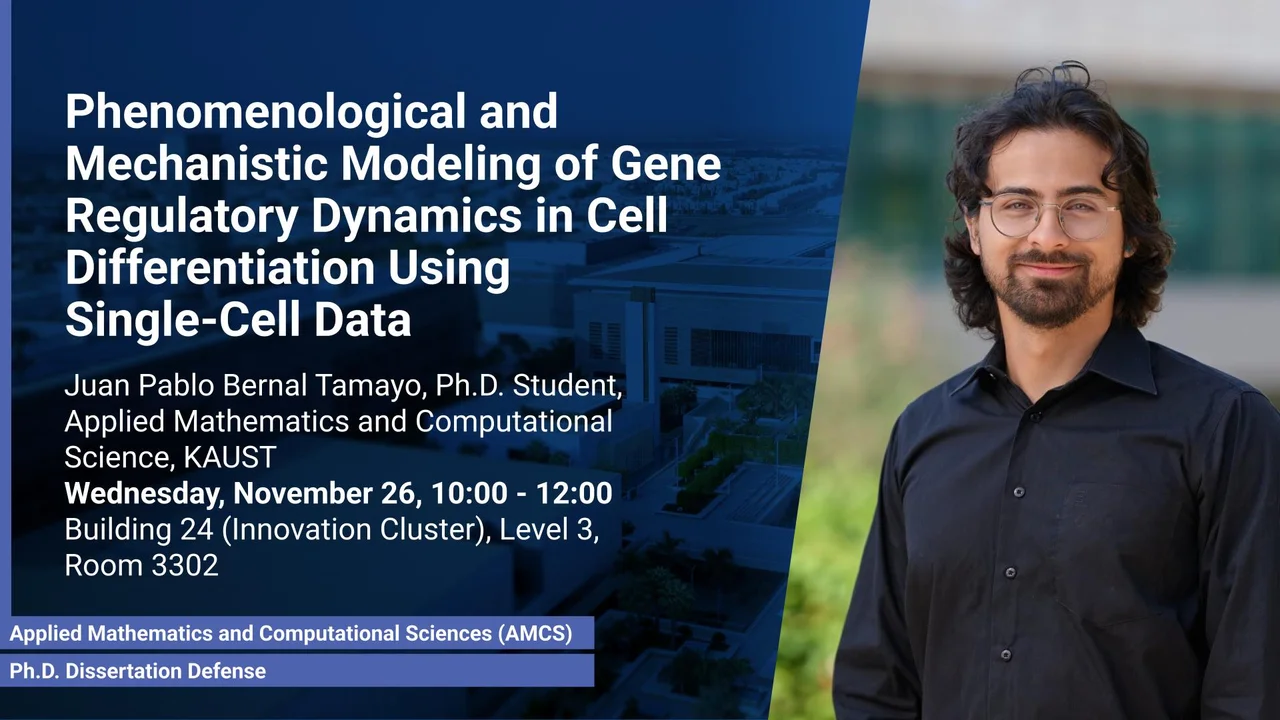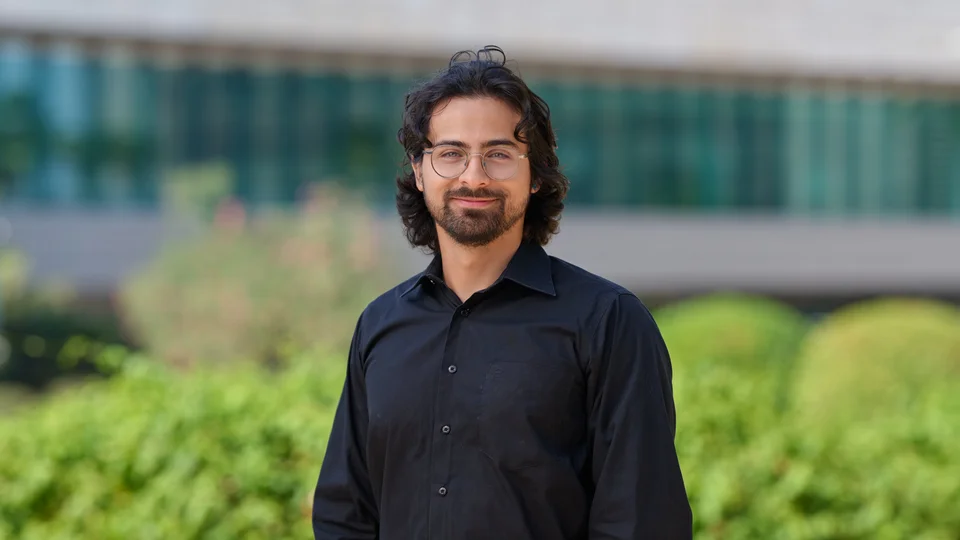
Phenomenological and Mechanistic Modeling of Gene Regulatory Dynamics in Cell Differentiation Using Single-Cell Data
B24 (Innovation Cluster) L3 R3302
This dissertation develops integrated phenomenological and mechanistic modeling frameworks that maintain biological interpretability while capturing regulatory dynamics during cellular differentiation.
Overview
Single-cell genomics technologies now capture cellular differentiation trajectories at unprecedented resolution, yet interpretable frameworks explaining the regulatory forces driving these transitions remain lacking. While we can observe what cells become, understanding why and how fate decisions occur at the molecular level remains elusive. Current computational approaches face a fundamental trade-off: gene regulatory network inference methods identify potential regulatory relationships but ignore temporal dynamics, while RNA velocity models reconstruct differentiation trajectories but lack explicit network representations. This dichotomy limits translation of observational data into actionable mechanistic insights and presents a critical barrier for rational engineering of cellular differentiation in regenerative medicine.
This dissertation develops integrated phenomenological and mechanistic modeling frameworks that maintain biological interpretability while capturing regulatory dynamics during cellular differentiation. We present the scHopfield framework, a novel computational method integrating Hopfield network dynamics with Hill kinetics and RNA velocity models, enabling cell-type-specific network inference with mechanistic interpretability. Through validation on simulated data and canonical differentiation systems such as pancreatic endocrinogenesis and hematopoietic development, we quantitatively validate Waddington’s landscape hypothesis and identify regulatory drivers through integrated analysis of energy landscapes, network architecture, and local stability dynamics.
We establish three key results. First, scaffold-guided network inference achieves superior accuracy compared to de novo approaches when prior knowledge from chromatin accessibility guides inference while preserving flexibility for context-specific discovery. Second, quantitative analysis validates Waddington’s hypothesis: cells systematically move down energy gradients during differentiation, with progenitor states exhibiting higher and more variable energies than differentiated cells. Third, integrated analysis combining energy-gene expression correlations, network centrality metrics, and Jacobian eigenvalue decomposition identifies established master regulators such as GATA1, SPI1, and CEBPA along with novel relationships including GATA2’s role in neutrophil specification.
These results show that mechanistic interpretability and predictive accuracy are compatible. The scHopfield framework provides practical tools for identifying stage-specific regulatory drivers and bottleneck genes controlling fate decisions. For regenerative medicine, the energy landscape framework offers quantitative metrics for assessing differentiation efficiency and predicting which interventions effectively guide cells toward desired fates. Identifying master regulators through convergent evidence reduces false positives inherent in single computational methods.
This work opens new directions for systems biology in the multi-omics era. As single-cell profiling expands to incorporate spatial context, chromatin accessibility, and protein abundance, interpretable frameworks that maintain mechanistic understanding while integrating diverse data will become essential. The principles demonstrated here, maintaining biological interpretability within machine learning frameworks, leveraging prior knowledge without sacrificing discovery flexibility, and validating predictions through convergent evidence, provide a roadmap for next-generation computational approaches to address fundamental questions in development, disease progression, and cellular reprogramming wherever regulatory dynamics govern biological state transitions.
Presenters
Brief Biography
Juan Pablo Bernal Tamayo is a Ph.D. student Applied Mathematics and Computational Science (AMCS) at King Abdullah University of Science and Technology (KAUST), working in Professor Jesper Tegnér’s AI Biomedicine Lab research group. He develops dynamic models to infer gene regulatory interactions during cellular differentiation. He holds an M.S. in Applied Mathematics from the Mathmods - Erasmus Mundus program (University of L’Aquila and University of Hamburg) and dual bachelor’s degrees in Engineering Physics and Pure Mathematics from Universidad Nacional de Colombia, Medellín. During his doctoral studies, he has served as a teaching assistant for graduate courses in Numerical Optimization and Numerical Linear Algebra.

